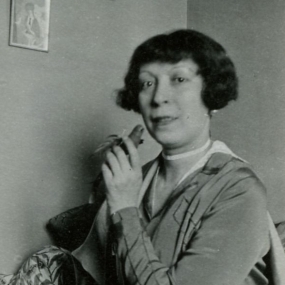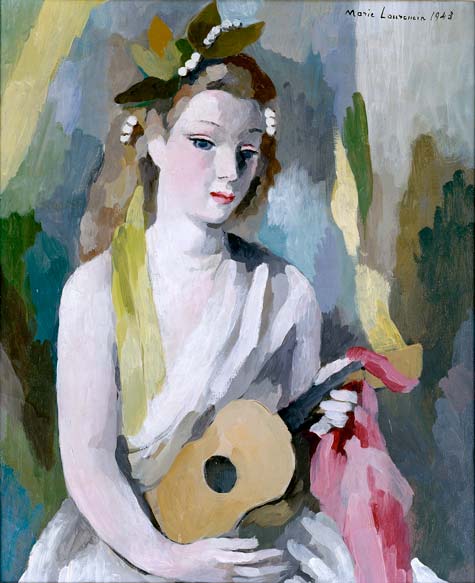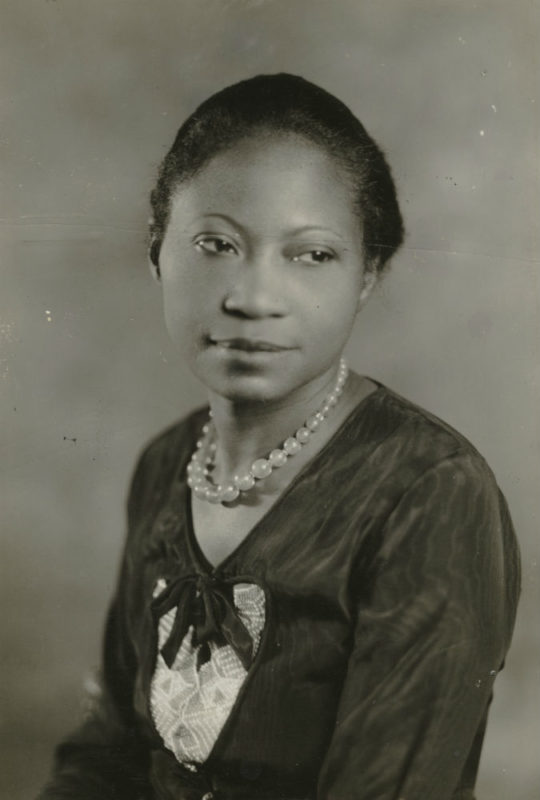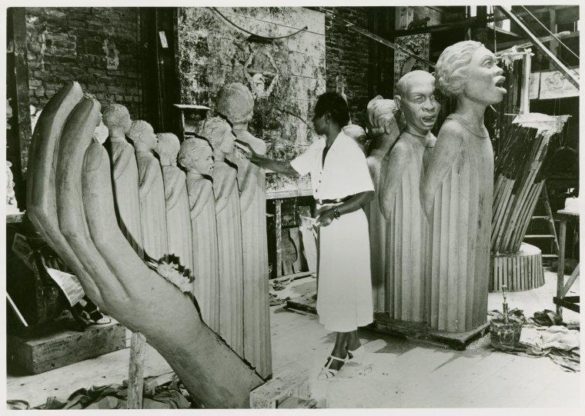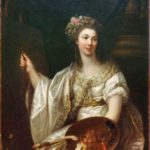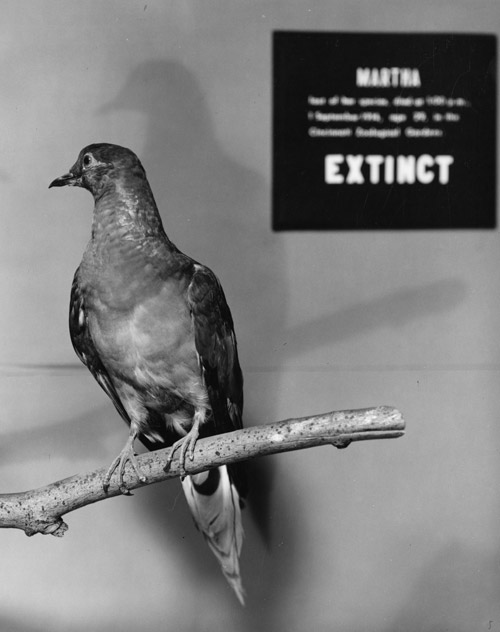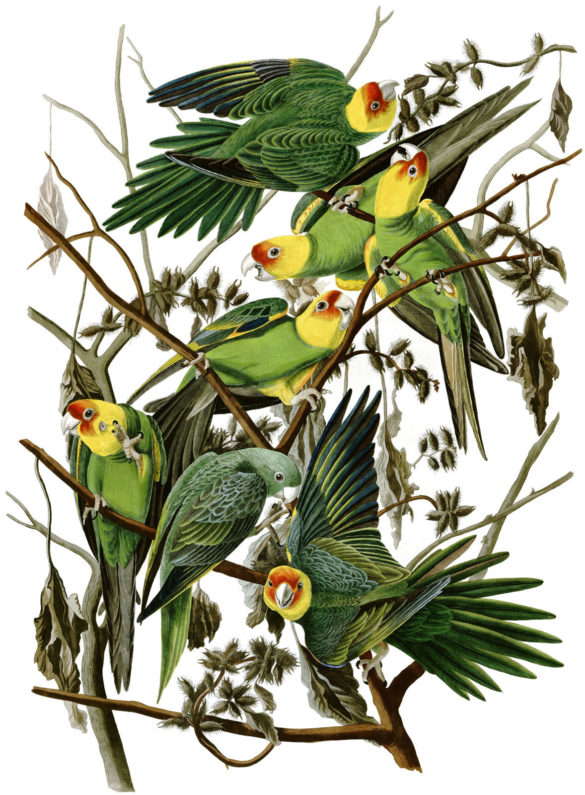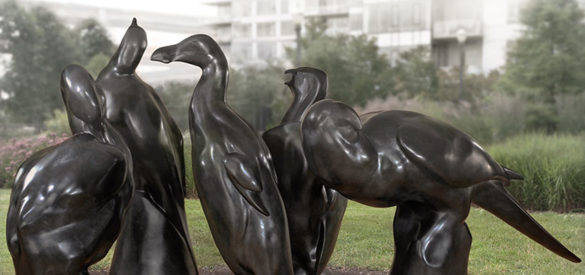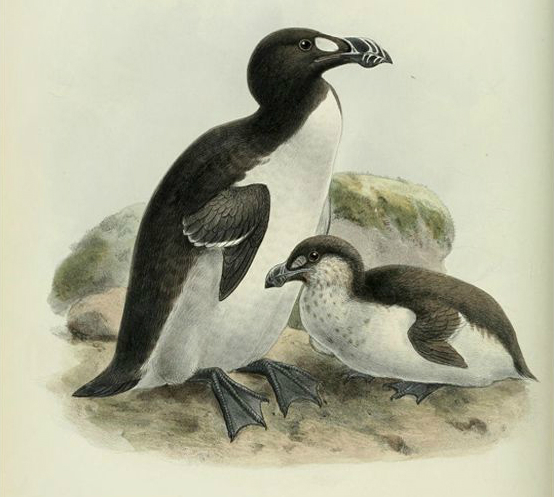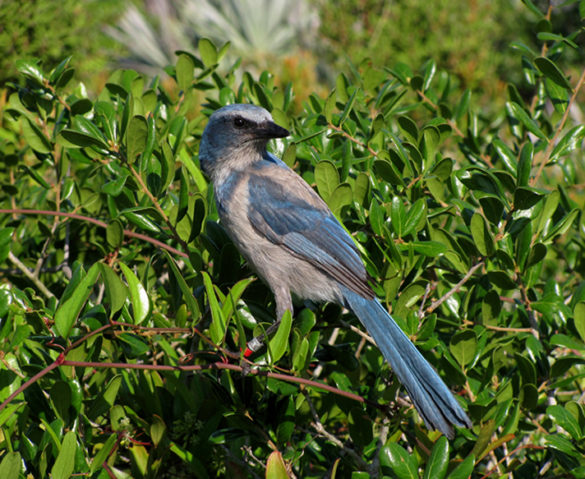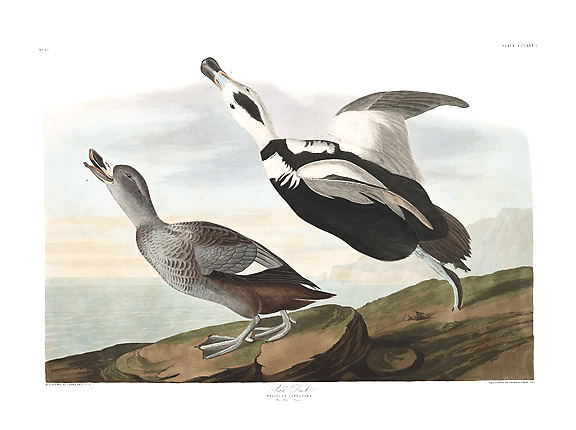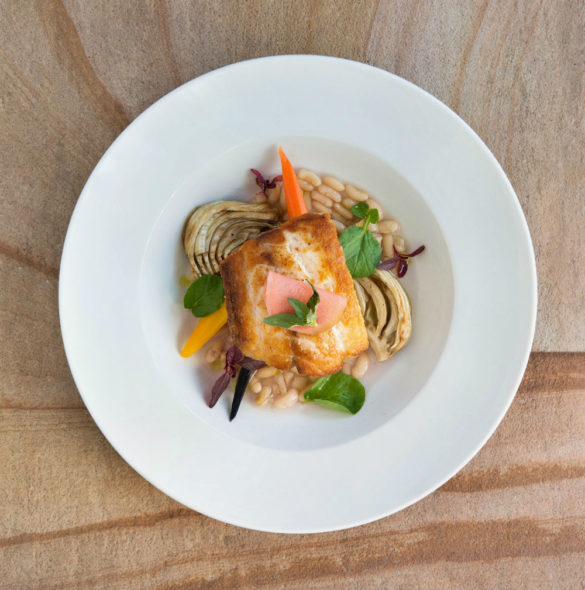
Photo by Agnes Lopez
Today’s recipe from “The Chef’s Canvas” is a delicious entree inspired by Parade to War, Allegory. Let’s walk through this recipe together and learn how to create this eclectic and unique dish!
Seared Red Grouper, Lemongrass-Scented Broth, Flageolet Beans, Baby Carrots, Fennel, Pickled Watermelon Radish, and Lemon and Tarragon Oils
Serves 2
Red grouper filets
1 tablespoon canola oil
1 tablespoon unsalted butter
1 pound clams
Fish stock
Flageolet Beans
Baby Carrots
Roasted Fennel
Upland cress, fennel fronds, micro sango radish, and micro basil, to garnish
Pickled Watermelon Radish
Lemon Oil
Tarragon Herb Oil
Salt and freshly ground black pepper
Preheat oven to 375 degrees.
Pat fish dry with a paper towel and season with salt and pepper. Add oil to a medium sauté pan and heat over medium-high heat until almost smoking. Gently place fish in pan and sear until golden brown, around 3 to 5 minutes.
Turn fish over and sear the other side until golden brown. Remove fish and place in an oven-safe pan with butter, then bake until just cooked through. Exact cooking time will depend on the size of the fish, so check it often.
While the fish is baking, heat flageolet beans in a little of their own cooking liquid and season to taste. Steam clams in fish stock.
Using a slotted spoon, place beans in the center of a large shallow bowl, then place roasted baby carrots across beans. Place two pieces of roasted fennel next to the beans, then gently ladle about a cup of fish broth into the bowl. Place seared fish on top of beans and baby carrots. Arrange upland cress, micro sango radish, fennel fronds, and micro basil around the fish. Place pickled watermelon radish on top of fish then finish with a few drops of lemon and tarragon oil.
Fish Stock
2 tablespoons olive oil
1 large leek, chopped
3 ribs celery, chopped
2 bulbs fennel, chopped
4 cloves garlic, smashed
2 cups white wine
1 pound white fish bones
Lemongrass
1 bay leaf
1 teaspoon pink peppercorns
1 teaspoon green peppercorns
8 cups water
Heat oil in a large saucepan over medium heat until hot but not smoking. Add leek, celery, fennel, and garlic, and sauté until translucent, about 8 minutes.
Deglaze with white wine and simmer for 6 to 8 minutes. Add fish bones, lemongrass, bay leaf, pink and green peppercorns, and water. Bring to a simmer and cook for about 30 minutes until aromatic.
Strain stock through a fine mesh sieve and skim off any fat.
Flageolet Beans
½ cup flageolet beans, soaked overnight
½ carrot, chopped
1 rib celery, chopped
¼ yellow onion, chopped
Place all ingredients in a medium saucepan and cover with water.
Simmer over medium heat until beans are tender, about 30-45 minutes. Drain beans and reserve cooking liquid.
Baby Carrots
3 baby carrots
1 knob butter
Blanch baby carrots in boiling salted water for 2 minutes. Once finished, immediately transfer to an ice bath to stop the cooking process.
When ready to plate, heat carrots in a saute’ pan with butter and season to taste with salt and pepper.
Roasted Fennel
1 bulb fennel, cored (reserve fronds for garnish)
¼ cup olive oil
¼ cup water
Salt and pepper, to taste
Preheat oven to 350 degrees.
Cut fennel in half lengthwise, the cut crosswise into ¼ inch slices.
Place fennel in a baking dish. Cover with olive oil and water. Bake for 25 minutes and season with salt and pepper.
Tarragon Herb Oil
1 cup chives
1 cup tarragon
1 cup flat leaf parsley
1 cup canola oil
Blanch the chives, tarragon, and flat leaf parsley in boiling salted water for 20 seconds and immediately shock in ice water to stop the cooking process.
Remove herbs from water and squeeze out any access liquid. Roughly chop the herbs and place in a blender with the oil. Puree for 3 minutes; the herbs should be bright green.
Strain oil through a fine mesh sieve and transfer to a squeeze bottle.
Pickled Watermelon Radish
1 carrot, peeled
1 tablespoon salt
1 bay leaf
1 watermelon radish, peeled and thinly sliced
1 ½ cups seasoned rice wine vinegar
½ cup water
1 teaspoon black peppercorns
1 serrano chili pepper, halved
Peel carrot into thin ribbons using a vegetable peeler. Place ribbons in a bowl and toss with salt, bay leaf, and watermelon radish.
In medium saucepan, boil the vinegar, water, peppercorns, and chili pepper. Remove from heat and cool slightly, then pour over carrot mixture.
Lemon Oil
1 large lemon, washed and dried
1 cup olive oil
Remove the zest from the lemon, avoiding the bitter white pith. Place the lemon zest and olive oil in a small sauce pan and warm over medium heat – do not let the oil simmer. Cook for about 10 minutes, then remove from heat and allow to cool.
Now you and a loved one can put napkins in your laps, pair the dish with your favorite white wine, and enjoy the hand-crafted meal you just made. You certainly earned it!

John Steuart Curry
American, 1897 – 1946
Parade to War, Allegory
1938
Oil on canvas
Gift of Barnett Banks, Inc.
AG.1991.4.1
Parade to War, Allegory was painted in the period of time after the Great Depression and before World War II. John Steuart Curry takes the scene of a joyous parade and morphs it into the morbid depiction of men marching to their deaths by turning the soldiers’ visages into skeletons. Parade to War, Allegory was meant to reflect the apprehension of the American people to fight in World War II.
“This painting was completed after the Great Depression, a time when people turned to growing their own gardens to provide food for their families. I wanted to create a dish that reflects that same garden-to-table mentality. My dish incorporates regionally grown ingredients and locally caught red grouper.
One of my biggest sources of inspiration as chef is my wife and family. When I looked at this painting, I saw a beautiful woman walking next to a soldier and playing children, and was instantly reminded of my family. The faces on each soldier reflect how their fates have all been predetermined by the war. When I leave for work, I am always thinking about my family and how important they are in my life.” – Ian Lynch, Executive Chef at Bistro Aix, on Parade to War, Allegory
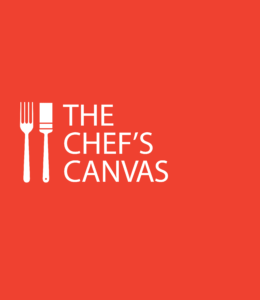
“The Chef’s Canvas” is a cookbook created to honor the Museum’s permanent collection. The book is a treasure trove of artistic masterpieces, from the Museum’s galleries to kitchens throughout the diverse food scene in Jacksonville. This collaboration is like nothing the Museum has done before, and we look forward to sharing select recipes and the pieces of art that inspired them with you in The Chef’s Canvas Recipe Series.
“The Chef’s Canvas,” a work of art itself, was born of the idea that art fuels inspiration in all aspects of life, including in the kitchen. This unique collaboration allowed Jacksonville’s culinary experts to explore the collection and leave with the inspiration to create delicious, beautiful dishes, desserts, and cocktails. This series aims to give you a taste of Jacksonville’s culture, flavors, and artistry.
